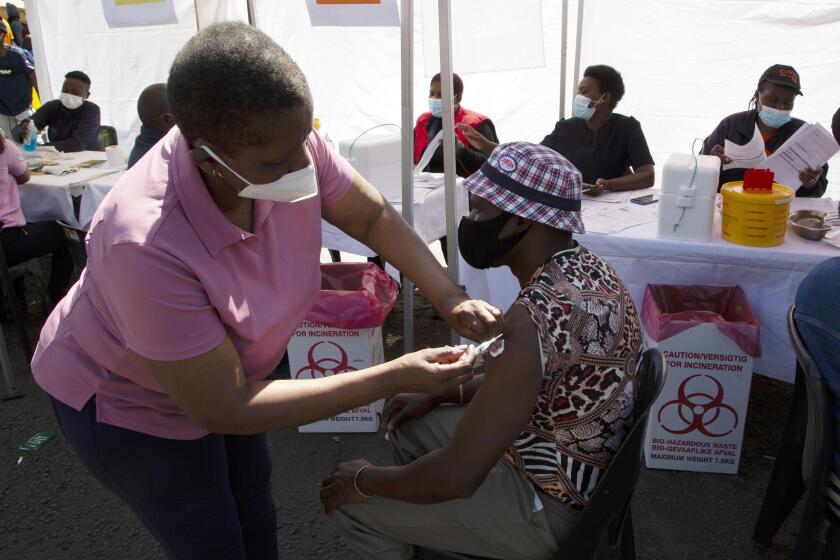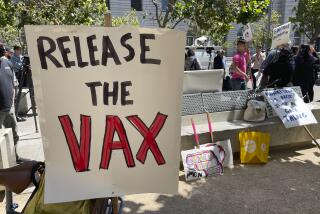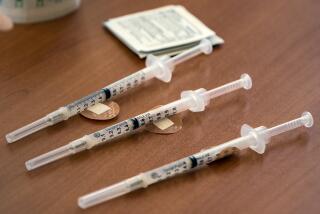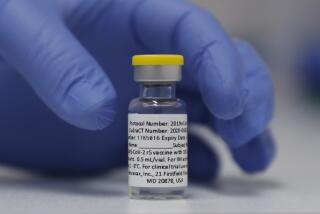Rich countries getting new Novavax COVID-19 vaccine before poorer ones

The company behind a COVID-19 vaccine touted as a key tool for the developing world has sent tens of millions of doses to wealthy nations but provided none yet to the United Nations-backed effort to supply poorer countries, a sign that inequity persists in the global response to the pandemic.
COVAX had planned to make available 250 million doses from Novavax by March, but the U.N. agency in charge of deliveries says the first shipments now likely won’t be made until April or May.
It wasn’t supposed to be this way. CEPI, one of the organizations leading COVAX, gave Novavax $388 million to fast-track the vaccine’s development. The aim was to make the shot available in poorer countries as the pandemic was exploding two years ago.
The investment guaranteed COVAX the “right of first refusal” to the first Novavax doses, but the deal applied only to factories in the Czech Republic, South Korea and Spain, said CEPI spokesman Bjorg Dystvold Nilsson.
There are other factories that aren’t part of the deal — and their shots are going elsewhere.
The Serum Institute of India, the world’s largest vaccine maker, has manufactured millions of Novavax doses. According to India’s Ministry of External Affairs and the institute, more than 28.9 million of those doses were sent to the Netherlands in January and February, while Australia received about 6 million doses. Indonesia also received about 9 million doses in December.
Thousands of other Novavax doses were also shipped from a Netherlands factory to other EU countries.
Health officials knew the competition between rich and poor countries would be lopsided when the race for COVID-19 vaccines started.
“Whatever the reason, a vaccine that was believed to be highly suitable for poor countries is now in large part going to rich countries,” said Zain Rizvi, a drug policy expert at the U.S. advocacy group Public Citizen. “It’s tragic that in year three of the pandemic, we still cannot get the resources, attention and political will to solve vaccine inequity.”
The delay is the latest setback for COVAX, which has been repeatedly hit by supply problems and has missed numerous targets to share doses.
Last year, WHO’s Director-General Tedros Adhanom Ghebreyesus decried the chasm in vaccine supplies between rich and poor countries as a “catastrophic moral failure.”
Vaccine availability has been improving in poorer regions recently, but logistical problems persist.
According to data from Oxford University, only about 14% of people in low-income countries have received at least one dose of COVID-19 vaccine. More than 680 million doses of COVAX-provided vaccines remain unused or have expired, according to government data.
While jabs and boosters are offered in the U.S. and much of Europe, vaccination rates remain low in southern Africa, where the Omicron variant was first detected.
Even with vaccine supplies improving, some officials were eagerly awaiting the Novavax vaccine in particular because it is easier to transport and store than some other coronavirus shots. They also hoped it might be more enticing to people skeptical of the AstraZeneca vaccine, which experienced a botched rollout in Europe.
Countries including Zimbabwe, the Central African Republic and Kiribati were among those in line to be offered Novavax doses by March from COVAX.
Before the pandemic, Novavax was a small American company that had never brought any vaccine to market. Its shots have proven highly effective, but it is relying heavily on other companies to make them.
The company, struggling to scale up production, also has delayed delivery to other countries, including some in the European Union. COVAX is supposed to receive more than 1 billion Novavax doses.
In a statement, the Gaithersburg, Md., company acknowledged that it had yet to share any shots with the vaccines alliance Gavi, which fronts the COVAX effort, but said it stands ready to do so.
“We continue to work with Gavi to reach our shared goal of ensuring global access to our protein-based vaccine where it is needed most,” Novavax said.
Gavi suggested part of the delay is that the Novavax vaccine wasn’t authorized by WHO until December. Gavi said it planned to allocate Novavax in the future and was “in close touch with the manufacturer and expects the supply to be available for delivery when countries need it.”
Booster moratorium, or booster momentum? WHO chief’s call to ease vaccine disparity draws mixed response
Health officials also worry that the urgency to vaccinate people everywhere against COVID-19 has disappeared — especially as many countries roll back precautions and the world’s attention is diverted.
“Rich countries have moved on from COVID and everyone is fixated on the war in Ukraine, but COVID-19 remains an acute crisis for most people in the world,” said Ritu Sharma, a vice president at the charity CARE.
She said COVAX was still desperately short of vaccines and that based on the current pace of vaccination, the world was still “years and years” away from immunizing enough people to stop future COVID-19 waves.
Other experts said it was incumbent on public health agencies to ensure their investments in vaccines would benefit poor countries and to be more transparent about what went wrong.
“Whatever the explanation is, it’s unsatisfactory,” said Brook Baker, an access to medicines specialist at Northeastern University. “The bottom line is that there are still a lot of unvaccinated people in poor countries and once again, they are at the back of the line.”
Cheng reported from London.
More to Read
Start your day right
Sign up for Essential California for news, features and recommendations from the L.A. Times and beyond in your inbox six days a week.
You may occasionally receive promotional content from the Los Angeles Times.









